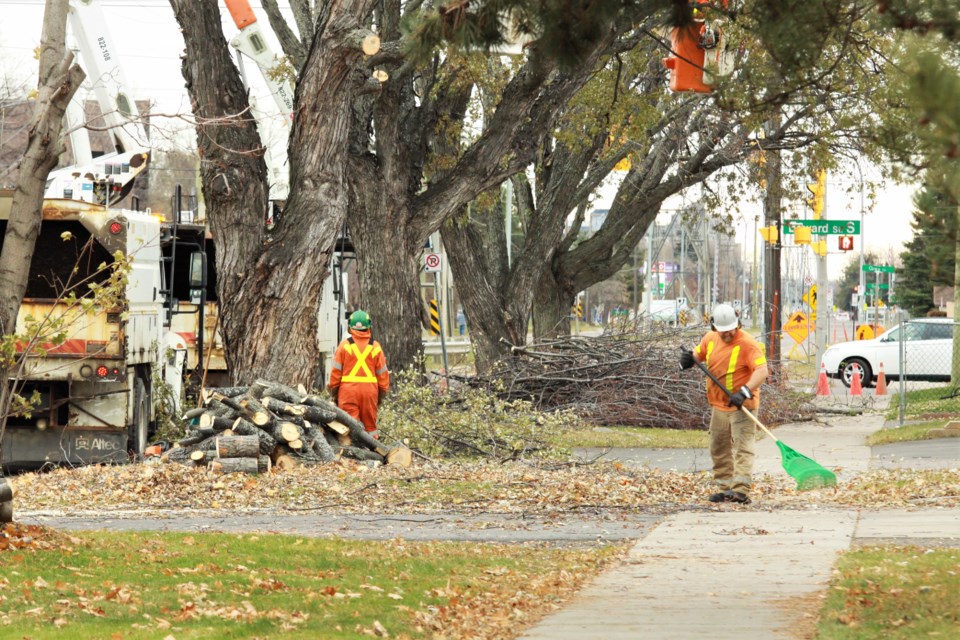THUNDER BAY – A new agreement between the City of Thunder Bay and Synergy North will see the company compensate the city for the loss of some of the trees removed each year due to proximity with its power lines.
The agreement is expected to add $15,000 to $25,000 a year to the city’s tree-planting budget, allowing it to plant an estimated 30 to 50 additional trees.
However, it won’t buy residents more time to plant replacement trees before the removals occur, as some had hoped.
City council will review the proposed agreement at a meeting on Monday.
In 2017, council directed city staff to enter into discussions with the utility after concerns raised by a property owner.
The result is a draft agreement that would see Synergy North pay the city a $500 fee for each tree removed due to new construction or relocation of infrastructure.
Reimbursement would be doubled in cases where the removal of a tree is caused by Synergy North installing new line extensions, new underground infrastructure that damages the root system requiring its removal, and severe accidental damage.
The agreement doesn’t cover removals caused by regular tree trimming along existing hydro lines, however.
That’s because the work “is required for safety clearances and trees impacted are typically naturally ingrown trees or trees that have been improperly planted” too close to power lines, according to a report prepared by parks and open spaces manager Cory Halvorsen.
Council had also hoped the two parties could explore options to delay maintenance work and tree removals to allow property owners time to plant replacement trees.
They concluded that won’t be possible, Halvorsen said.
“One of the things we identified with this agreement is that giving proactive notice to residents about potential loss of trees in front of their property is very difficult to do, because it’s a long-term exercise,” he said. “If you’re going to give someone enough notice to allow them to plant replacement trees… you need years and years of notice. So the risk may not even be evident at the time when you really should be planting.”
The city will instead work to develop guidance for residents on planting trees in a way that minimizes the risk of future removal, such as minimum suggested distances from power lines and advice on planting a secondary buffer of trees.
Power companies regularly trim or even remove the tops of trees entirely to control for hazards around power lines. The situation comes up frequently with trees on the city-owned boulevard and privately-owned trees close to the property line, Halvorsen said.
Under Ontario's Electricity Act, utilities have the right to enter any property to remove objects it deems may interfere with the safe transmission of power.
The practice has at times caused controversy, with residents complaining companies have not provided proper notice or have seemed to go further than necessary in trimming down trees.
The proposed arrangement with Synergy North would be an informal agreement, not a legally binding contract.
The details of the agreement can be revisited if necessary, Halvorsen said, after what he described as a trial year. It’s possible the city could consider pursuing similar agreement with other hydro utilities that operate in the city, he said.
The city has identified the need to replenish its urban tree canopy for reasons ranging from stormwater management to combatting climate change, setting a goal to plant 100,000 trees by 2050 as part of its net zero emissions plan.
“I think it’s more important than ever,” Halvorsen said. “Especially with all of the climate events, the rain events [we’re experiencing]. Our urban canopy provides huge protection to property and infrastructure with respect to lessening the impact of rain events, so that’s one clear benefit. There are multiple benefits just to health and the environment.”
